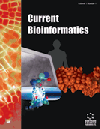-
oa Editorial
- Source: Current Bioinformatics, Volume 7, Issue 1, Mar 2012, p. 1 - 1
-
- 01 Mar 2012
- Previous Article
- Table of Contents
- Next Article
Abstract
What can be compared to travel thousands of miles from your place, arriving for the first time in a new country and suddenly finding you at home? This is the experience the great writer and philosopher Gilbert Keith Chesterton described one hundred years ago equating his spiritual and intellectual experience to an English explorer that arrives, after a long and dangerous journey, to an island and suddenly discovers it is Great Britain [1]. A similar ‘back-to-the-roots’ journey is now experienced by Bioinformatics, a discipline that started with a sort of ancillary attitude with respect to biology: this attitude is reflected by the emphasis on ‘informatics’, i.e. on making research work more efficient and not on the opening of new avenues. After two decades, the character of the discipline gradually changed, and Current Bioinformatics was a privileged observatory to look at this change: the development of new data analysis tools (I prefer the term data analysis with respect to informatics because it is more linked to the semantic part of the job), as often happened in science, unravelled a state-of-the-world completely different from what expected by mainstream biologists. Computational research urged biologists to consider the physical reality of the biological regulation so making a step ahead the ‘gene-by-gene’ approach (that did not fulfil its promises on both application and knowledge fronts). The classical way (started from Monod's ‘Operon’ discovery [2]) of dissecting the biological regulation into separate elementary steps simply adding up to create the complete picture was rapidly discovered as a sort of ‘biology-in-the-vacuum’ that did not take into account the basic physical laws governing our world. Just to make an example, have you ever considered which is the probability of dozens of ‘ordered sequential encounters’ necessary to the completion of Krebs cycle in a purely diffusion regime? Similar examples can be made for the onset of a coordinated and repeatable gene expression profile at the tissue level supported by a largely stochastic behaviour at single cell level [3], or for the presence of few ‘ideal’ protein folds out of the transfinite number of possible configurations. The entering into biological themes of scientists with a different background, fostered by Bioinformatics, now makes it possible (going back to the Krebs cycle this means we must think of reactions happening in a solid state and thus taking into consideration the relevance of ordered phases like cytoskeleton, while protein preferred shapes pushes our attention to the presence of a configuration space constrained by still largely unknown global energy landscapes) to push Biology back to its chemicophysical roots . This represents a great hope: any relevant revolution starts from the re-discovery of the past. It is not a case this revolution started from taking seriously the network paradigm: formalizing the biological systems as networks corresponds to shift from a paradigm where a given layer of organization (typically genes) is considered as the basis for the explanation of the whole system that follows from the basic layer in terms of quasi-deterministic rules to a ‘mesoscopic’ paradigm [4] where the focus is on the relations linking the different elements of the system. This paradigm shift reminds me of the introduction of the concept of field in physics that more than one century ago completely changed our mechanistic view of the world. Current Bioinformatics will remain a vibrant forum for the computational scientists if it will continue to keep alive and clear the strict link between computational methods and biological reality. REFERENCES [1] Chesterton GK, Orthodoxy. (http://www.gutenberg.org/ebooks/16769) 1908. [2] Jacob F, Monod J. On the regulation of gene activity. Cold Spring Harb Symp Quant Biol 1961; 26: 193-211. [3] Huang S. Reprogramming cell fates: reconciling rarity with robustness. BioEssays 2009; 31: 546-560. [4] Laughlin RB, Pines D, Schmalian J, Stojkovic BP, Wolynes P. The middle way. Proc Natl Acad Sci USA 2000; 97: 32-37.


